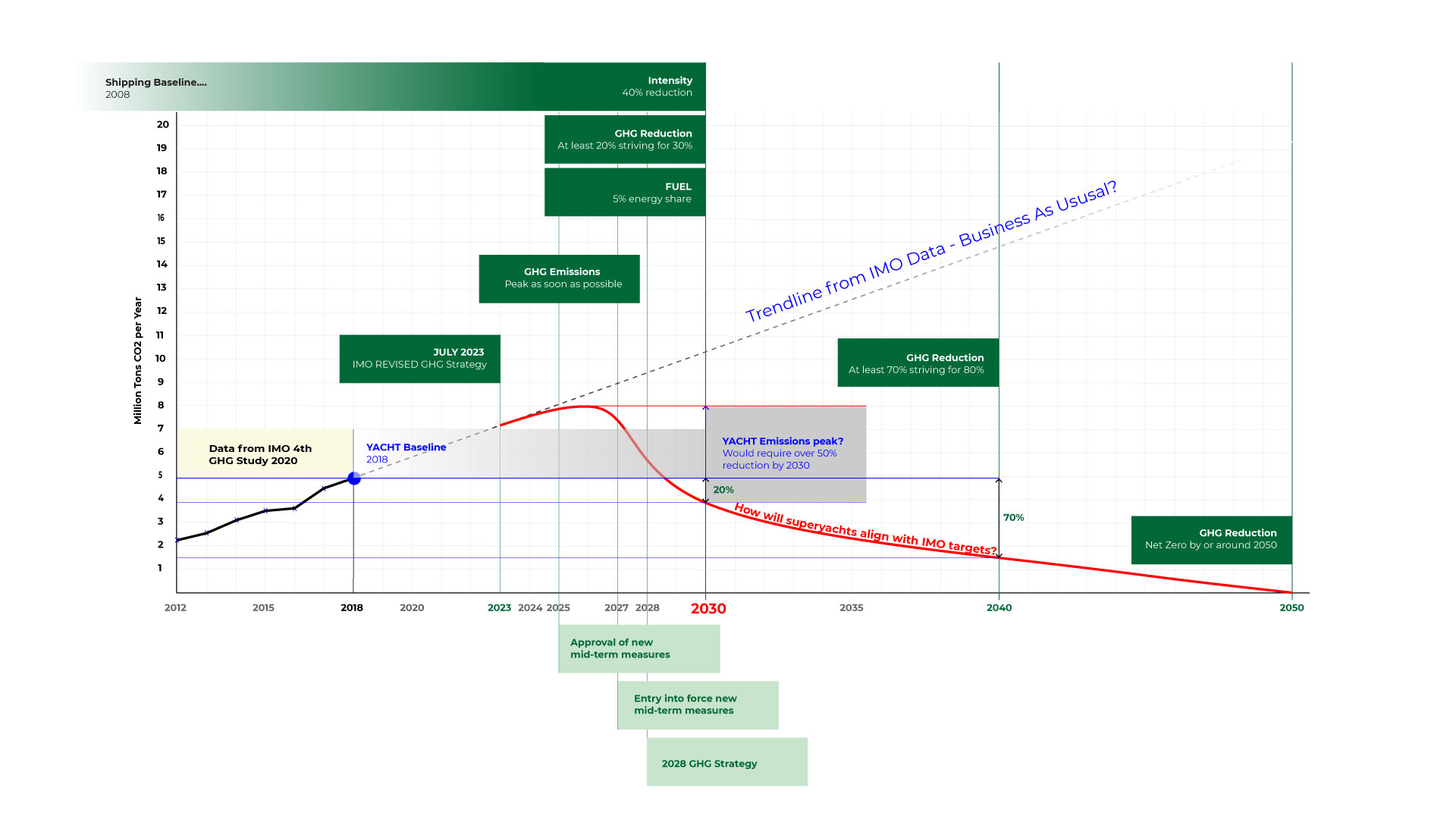With limited production capacity and long lead times, refit/rebuild becomes a more attractive alternative to new build for owners who do not want to wait 5+ years for delivery.
It will play an increasingly important role, especially for the legacy fleet, where owners, current and future, driven by factors such as future regulations, carbon tax, societal pressure, or choice, seek to lessen their yachts environmental footprint, reduce cost, improve comfort, and perhaps improve/protect charter and resale value.
Then there is also the generational shift of those wealthy individuals who are more focused on environmental issues.
These factors will be key for both new builds and the used market, hence the importance of having refit solutions that allow them to invest in more responsible yachting.
Increasing Emissions
Interestingly, compared to ships which have a commercially viable lifetime of around 20 years, superyachts that are well built and maintained can exceed this by many decades. This leads to a compound fleet growth and is one of the reasons why our emissions are set to double by 2030 compared to 2018.
Reducing emissions from the existing fleet will be crucial if yachting is to get anywhere near key GHG reduction targets such as the IMO’s 40% reduction in carbon intensity (higher target expected this year at MEPC 80) and the EU’s CO2 reduction of 55% by 2030 that now includes shipping.
Types of Upgrades
There are many potential solutions, from the simple and inexpensive, such as applying solar film to glass to reduce heat load, to the complex and costly, such as hybridisation of the power plant, sewage plant or A/C upgrade. In many cases there will also be space constraints that limit the scope of upgrades.
Upgrades could be categorised as low, medium, and high impact, based on cost, time and environmental benefit and, of course, they can also be phased in over several refit cycles, some examples: –
Caution Required
There are many factors to be considered including technical maturity and the viability of the product in relation to the yacht and its operational profile, so caution is required to ensure solutions live up to expectations.
Solutions must be throughly assed and able to withstand scrutiny, not only in terms of their environmental benefits such as emissions reductions (this could be the overriding goal) but also cost i.e. return on investment (ROI) and total cost of ownership (TCO).
Solutions providers will need to ensure full transparency and provide comprehensive information and data – ideally independently verified – on the benefits compared against the current systems and yachts operational profile.
Providers will need to ensure transparency and provide comprehensive information and data – ideally independently verified – on the benefits compared to the current systems and a yachts operational profile.
Refit yards, and now more common builders, will need to offer such upgrades to their clients. Perhaps even developing in-house teams that specialise in environmental upgrades who can also develop their own portfolio of recommended solutions.
Unless a refit company has proven knowledge and experience of the more complex solutions, it is advisable to use an independent advisor to undertake a study and cost/benefit analysis to ensure it meets the objectives.
Outlook
Maintenance and refit ultimately extend a yachts useful life, safety, its comfort and utility, as well as protecting value – climate change now adds another dimension that needs to be factored into its lifecycle.
With that in mind, there can little doubt that builders and refit companies will have to include efficiency and environmental upgrades in their expertise and portfolio of solutions. It provides an opportunity to grow their business and help yacht owners and the industry transition to a more sustainable future.





